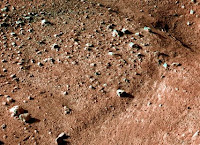NASA’s Mars Phoenix Lander successfully touched down on the Martian planet on Sunday and sent through its first images.
“It’s surprisingly close to what we expected and that’s what surprises me most,” said the mission’s principal investigator, Peter Smith. “I expected a bigger surprise.”
The landing ends the probe’s 296-day journey to the Red Planet’s arctic plains with a landing that was right on target. NASA’s Ed Weiler, compared the feat to landing a hole-in-one from 10,000 miles away with a golf ball.
At mission control, (NASA’s Jet Propulsion Laboratory in Pasadena, California) they celebrated the successful landing but the team is waiting anxiously for the next set of indicators to verify the health of the lander.
NASA was nervous about the landing and justifiably so. Phoenix’s twin, named Polar, malfunctioned during its decent in 1999 and crashed. Another spacecraft, the Mars Climate Orbiter also failed the same year.
Project manager for the Phoenix mission, Barry Goldstein told CNN. “It was better than we could have imagined,” referring to the landing.
During its journey, the Phoenix depended on electricity from solar panels built into the craft’s cruise stage. This was jettisoned seven minutes before entering the Martian atmosphere. Batteries are providing the craft with electricity until its own pair of solar arrays are spread open.
The Phoenix will remain on Mars for 90 days, analysing the permafrost and soil for signs of life – past or present.
“We are not going to be able to answer the final question of is there life on Mars,” said Peter Smith, principal investigator and optical scientist with the University of Arizona. “We will take the next important step. We’ll find out if there’s organic material associated with this ice in the polar regions. Ice is a preserver, and if there ever were organics on Mars and they got into that ice, they will still be there today.”
Photo credit: NASA
